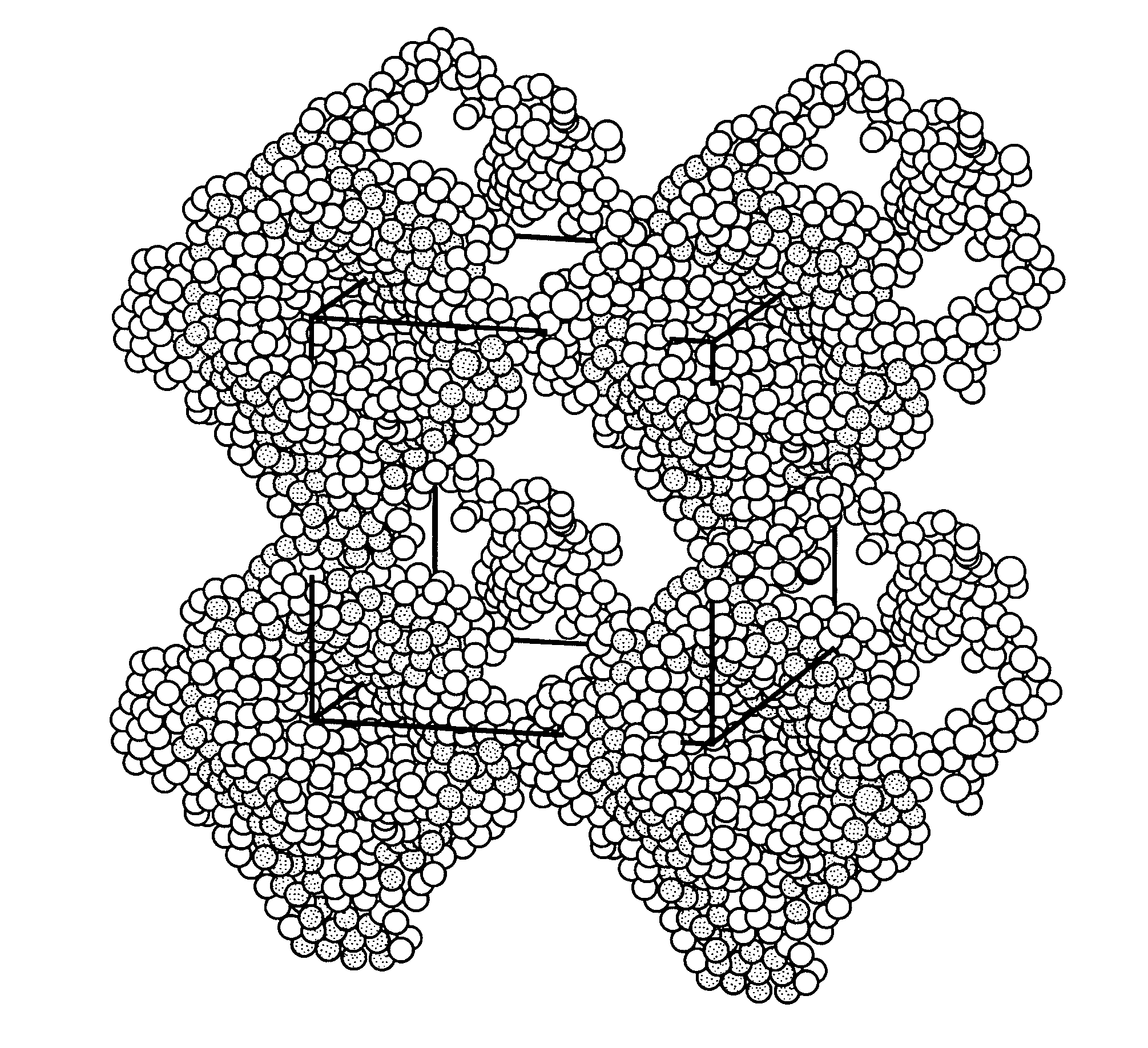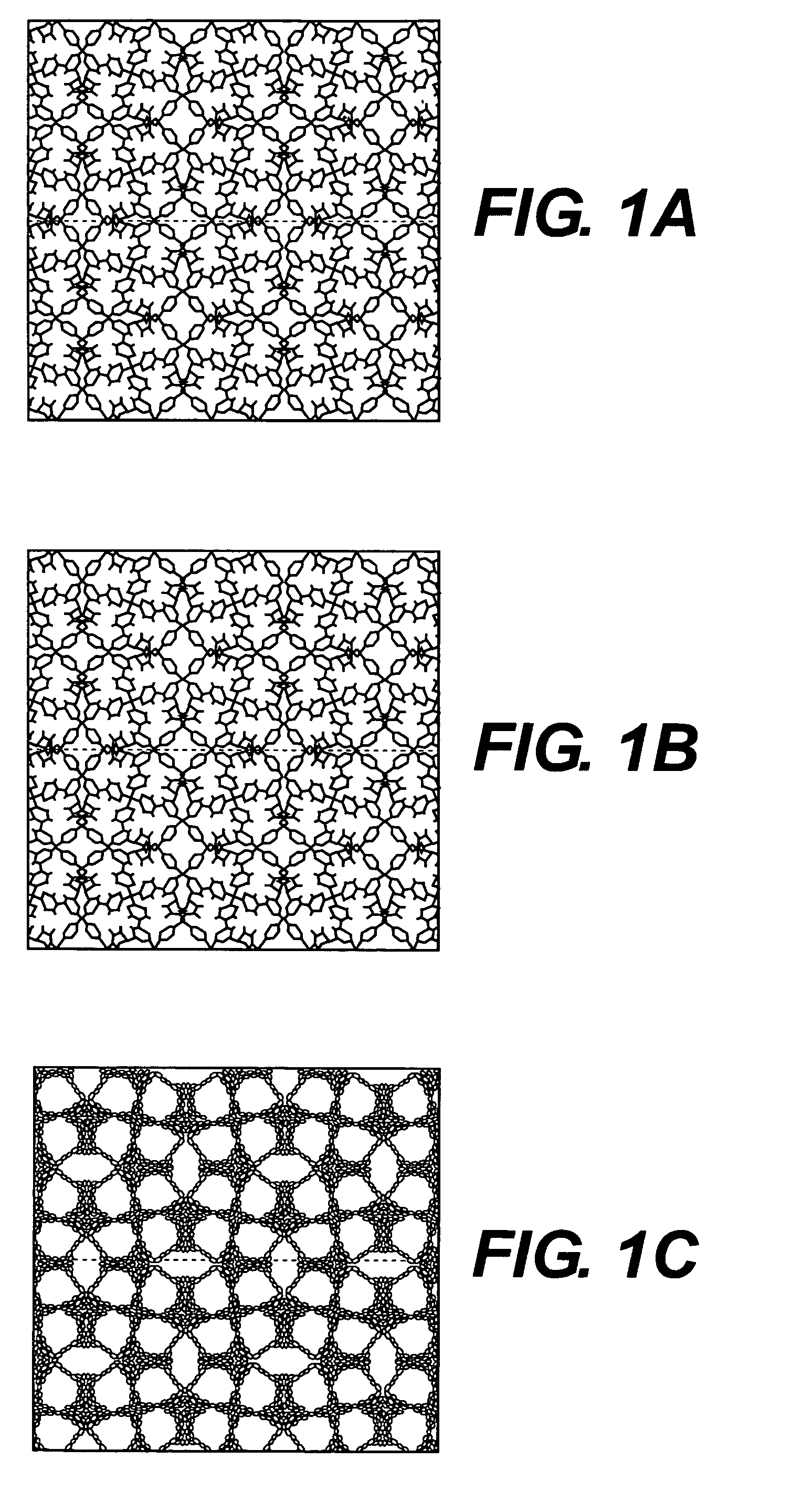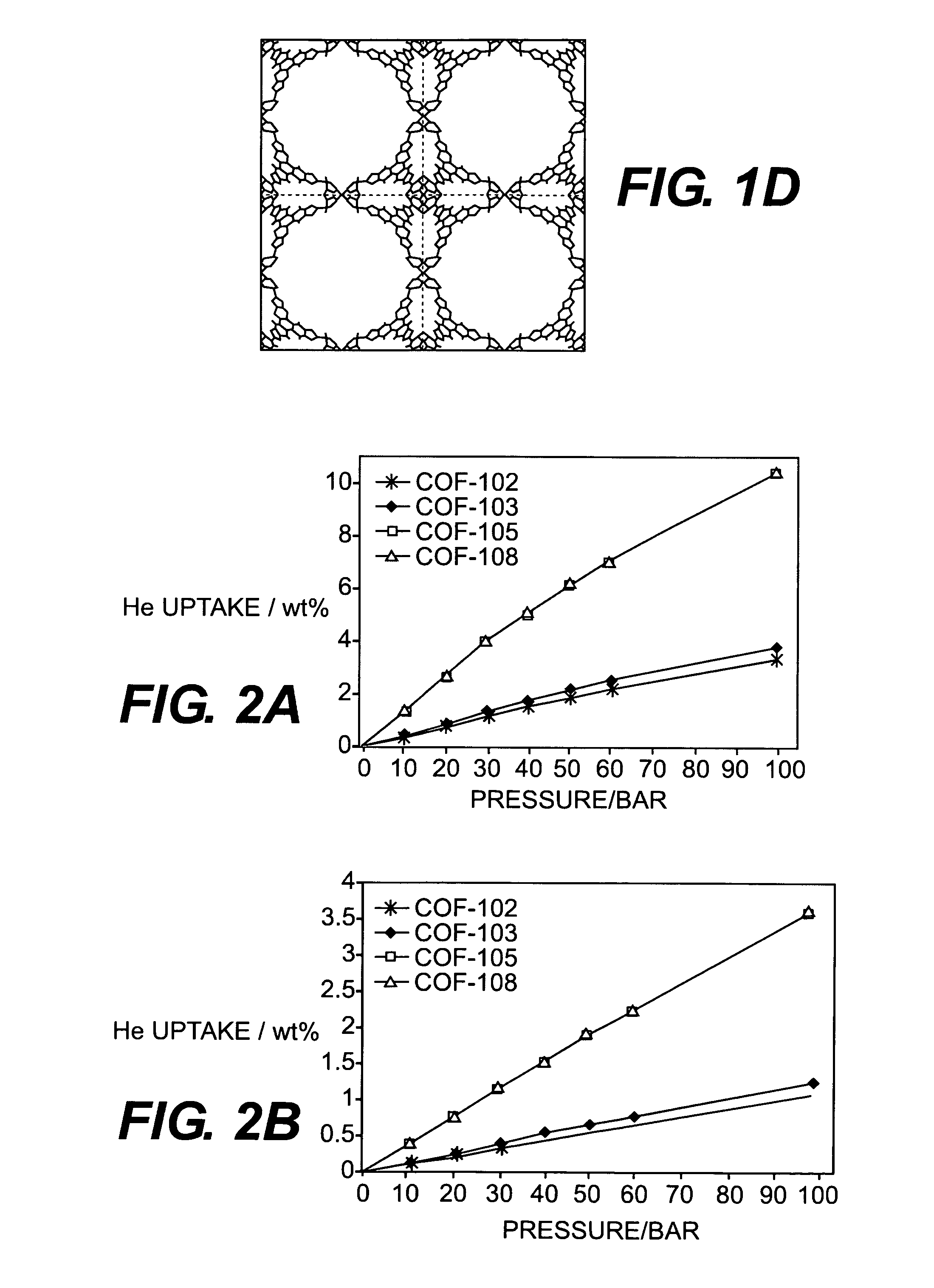Metal cation-doped covalent organic framework derivatives for hydrogen storage and method of using the same
a technology of covalent organic framework and metal cation, which is applied in the direction of group 3/13 element organic compounds, group 5/15 element organic compounds, etc., can solve the problems of inability to regenerate, environmental problems, and conventional hydrogen storage materials, and achieve the effect of increasing hydrogen absorption and desorption capacity
- Summary
- Abstract
- Description
- Claims
- Application Information
AI Technical Summary
Benefits of technology
Problems solved by technology
Method used
Image
Examples
example 1
Preparation of Covalent Organic Framework Derivative Doped with Li+ Ions
[0053]1.0 mL of a solution of mesitylene and dioxane with 1:1 ratio by volume (v / v) and 0.10 mmol of tetra(4-(dihydroxy)borylphenyl)methane having one phenyl group were placed in a pyrex tube.
[0054]The pyrex tube was instantly frozen to 77K in a LN2 bath, vacuum treated and sealed by decreasing internal pressure of the tube to 150 mTorr.
[0055]After heating the reaction mixture in the tube at 85° C. for 4 days, the resultant white precipitate was separated and washed using 10 mL of anhydrous tetrahydrofuran. The treated mixture was dipped in another 10 mL of anhydrous tetrahydrofuran for 8 hours.
[0056]Next, evaporating the solvent at room temperature under vacuum conditions resulted in a covalent organic framework in white powder form, which has carbon as a center atom in the tetrahedral structure and one phenyl group at a face of B3O3 ring.
[0057]The resultant framework was placed in a solution comprising lithium...
example 2
Preparation of Covalent Organic Framework Derivative Doped with Li+ Ions
[0059]1.0 mL of a solution of mesitylene and dioxane with 1:1 ratio by volume (v / v) and 0.10 mmol of tetra(4-(dihydroxy)borylphenylphenyl)methane having two phenyl groups were placed in a pyrex tube.
[0060]The pyrex tube was instantly frozen to 77K in a LN2 bath, vacuum treated and sealed by decreasing internal pressure of the tube to 150 mTorr.
[0061]After heating the reaction mixture in the tube at 85° C. for 4 days, the resultant white precipitate was separated and washed using 10 mL of anhydrous tetrahydrofuran. The treated mixture was dipped in another 10 mL of anhydrous tetrahydrofuran for 8 hours.
[0062]Next, evaporating the solvent at room temperature under vacuum conditions resulted in a covalent organic framework in white powder form, which has carbon as a center atom in the tetrahedral structure and one phenyl group at a face of B3O3 ring.
[0063]In order to remove solvent ingredient contained in pores of ...
example 3
Preparation of Covalent Organic Framework Derivative Doped with Li+ Ions
[0065]The procedure described in Example 1 was repeatedly conducted, except that tetra(4-(dihydroxy)borylphenylacetylphenyl)methane having one unsaturated acetyl group and two phenyl groups was used instead of (4-(dihydroxy)borylphenyl)methane to produce a covalent organic framework derivative, which has carbon as a center atom in the tetrahedral structure and one unsaturated acetyl group and two phenyl groups at a face of B3O3 ring doped with lithium ions.
PUM
| Property | Measurement | Unit |
|---|---|---|
| size | aaaaa | aaaaa |
| temperature | aaaaa | aaaaa |
| temperature | aaaaa | aaaaa |
Abstract
Description
Claims
Application Information
 Login to View More
Login to View More - R&D
- Intellectual Property
- Life Sciences
- Materials
- Tech Scout
- Unparalleled Data Quality
- Higher Quality Content
- 60% Fewer Hallucinations
Browse by: Latest US Patents, China's latest patents, Technical Efficacy Thesaurus, Application Domain, Technology Topic, Popular Technical Reports.
© 2025 PatSnap. All rights reserved.Legal|Privacy policy|Modern Slavery Act Transparency Statement|Sitemap|About US| Contact US: help@patsnap.com



